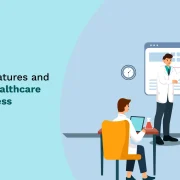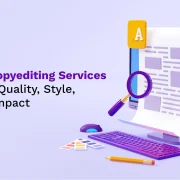A dynamic and iterative approach to learning and development, Agile Learning emphasizes flexibility, collaboration, and continuous improvement. Borrowing principles from Agile software development, it prioritizes learner needs and adapts content and delivery methods based on ongoing feedback and performance data, ensuring a more engaging and effective learning experience. This learner-centric model promotes rapid skill acquisition and fosters a culture of adaptability, crucial in today’s rapidly evolving digital landscape.
What is Agile Learning?
Agile Learning is a dynamic and iterative approach to learning and development, drawing inspiration from Agile methodologies used in software development. It emphasizes flexibility, continuous improvement, and collaboration to create a learner-centric experience.
Unlike traditional, linear learning models, Agile Learning operates in short cycles or “sprints.” Each sprint focuses on a specific learning objective, followed by reflection and adaptation based on feedback and performance. This allows for rapid adjustments to the learning path, ensuring it remains relevant and effective for the individual learner’s needs.
Key characteristics of Agile Learning include:
- Iterative & Incremental: Learning occurs in small, manageable chunks with frequent opportunities for review and refinement.
- Learner-Centric: The learning journey is tailored to the individual’s goals, skill gaps, and learning preferences.
- Collaborative: Encourages interaction and knowledge sharing among learners and instructors.
- Data-Driven: Uses data and feedback to continuously improve the learning process and content.
- Adaptable: Easily adjusts to changing needs, new information, and emerging technologies.
By embracing Agile principles, learning becomes more engaging, efficient, and responsive, ultimately leading to better knowledge retention and practical application. It’s a powerful approach for organizations seeking to upskill their workforce in today’s rapidly evolving environment.
Why is Agile Learning Important?
In today’s rapidly evolving landscape, characterized by constant technological advancements and shifting market demands, traditional learning approaches often fall short. Agile Learning emerges as a crucial paradigm shift, offering significant advantages for individuals and organizations seeking to thrive in this dynamic environment.
Adaptability and Responsiveness: Agile Learning prioritizes flexibility and responsiveness to change. Unlike rigid, pre-defined curricula, it allows for continuous adaptation based on feedback, new information, and evolving needs. This ensures that learning remains relevant and aligned with current business objectives, making it highly valuable in uncertain times.
Increased Engagement and Motivation: By focusing on learner autonomy and iterative progress, Agile Learning fosters a more engaging and motivating learning experience. Learners are empowered to take ownership of their development, pursue their interests, and apply new knowledge directly to real-world problems. This leads to higher retention rates and improved performance.
Faster Skill Development: The iterative nature of Agile Learning allows for rapid prototyping and experimentation. Learners quickly acquire new skills and competencies through practical application, frequent feedback, and continuous improvement. This accelerated learning cycle equips individuals with the necessary tools to meet immediate challenges and seize emerging opportunities.
Enhanced Collaboration and Innovation: Agile Learning promotes collaboration and knowledge sharing among learners. Through teamwork, peer-to-peer learning, and open communication, individuals learn from each other’s experiences, broaden their perspectives, and develop innovative solutions. This collaborative environment fuels creativity and drives organizational growth.
In conclusion, Agile Learning is essential for navigating the complexities of the modern world. Its emphasis on adaptability, engagement, speed, and collaboration empowers individuals and organizations to stay ahead of the curve, achieve their goals, and unlock their full potential.
How does Agile Learning Work?
Agile Learning, inspired by Agile software development, is a learner-centric, iterative approach to education emphasizing flexibility, collaboration, and continuous improvement. It focuses on breaking down learning into smaller, manageable sprints, allowing for frequent feedback and adaptation.
The process begins with defining learning objectives, similar to outlining requirements in Agile software. These objectives are then prioritized, and learners select what they want to tackle first, fostering ownership and engagement.
During each learning sprint, learners actively engage with the material, often through collaborative activities, projects, or discussions. Regular check-ins, such as daily stand-ups or brief reflections, help track progress, identify roadblocks, and adjust strategies.
A core element of Agile Learning is the retrospective. At the end of each sprint, learners and instructors reflect on what worked well, what could be improved, and how to optimize the process for future sprints. This iterative feedback loop ensures continuous improvement and personalized learning experiences.
Flexibility is key. Agile Learning adapts to the learner’s pace, style, and evolving needs. This adaptability ensures that the learning experience remains relevant and effective, promoting deeper understanding and retention.
Ultimately, Agile Learning empowers learners to take control of their education, fosters collaboration, and ensures continuous improvement, resulting in a more engaging and effective learning journey.
Agile Learning in Action: Real-World Examples
Agile Learning isn’t just a theoretical concept; several leading brands have successfully implemented its principles to drive employee growth and organizational agility. Here are a few notable examples:
Netflix: Fostering Continuous Improvement. Netflix is renowned for its culture of freedom and responsibility. Agile Learning manifests in their emphasis on continuous feedback and experimentation. Employees are encouraged to take calculated risks, learn from failures, and rapidly iterate on new ideas. This fosters a learning environment where skills are constantly updated and adapted to the dynamic streaming landscape.
Spotify: Squad-Based Learning. Spotify organizes its development teams into autonomous “squads,” each responsible for a specific feature or product. These squads operate with an Agile mindset, embracing short learning sprints, frequent knowledge sharing, and peer-to-peer learning. This decentralized approach empowers teams to quickly acquire new skills and adapt to evolving user needs.
Google: Data-Driven Development of Skills. Google leverages data analytics to identify skill gaps and personalize learning experiences. They use A/B testing to evaluate the effectiveness of different training programs and adapt their curriculum based on performance metrics. This data-driven approach ensures that learning initiatives are relevant, engaging, and directly contribute to business outcomes.
Amazon: Focus on Customer-Centric Innovation. Amazon’s dedication to customer obsession extends to its learning and development programs. Agile Learning principles are embedded in their culture of experimentation and rapid prototyping. Teams are encouraged to learn from customer feedback and quickly iterate on products and services. They also encourage project-based learning initiatives allowing employees to acquire skills through solving real-world customer related issues.
These examples demonstrate how Agile Learning, with its emphasis on adaptability, continuous improvement, and learner empowerment, can be a powerful tool for organizations looking to thrive in today’s rapidly changing world.
Key Benefits of Agile Learning
Agile learning delivers significant advantages to organizations seeking to adapt and thrive in dynamic environments. Its core strength lies in its iterative and flexible approach, offering benefits that traditional, rigid learning models often miss.
Enhanced Adaptability: Agile learning enables rapid responses to changing business needs and evolving skill requirements. Content and delivery methods are continuously refined based on feedback and performance data, ensuring relevance and effectiveness.
Increased Engagement: The modular, bite-sized content format characteristic of agile learning keeps learners engaged and motivated. This microlearning approach fits seamlessly into busy schedules, promoting consistent learning habits.
Improved Knowledge Retention: By focusing on practical application and continuous reinforcement, agile learning fosters deeper understanding and better retention of information. Regular assessments and feedback loops solidify learning outcomes.
Faster Time-to-Competency: Agile learning accelerates the development of necessary skills. The focus is on delivering precisely what learners need, when they need it, reducing wasted time and accelerating their ability to perform effectively.
Data-Driven Optimization: Agile learning leverages data analytics to track learner progress, identify areas for improvement, and optimize the learning experience. This data-driven approach ensures continuous improvement and maximizes ROI on learning initiatives.
Cost-Effectiveness: The ability to adapt content and delivery methods quickly minimizes the need for large-scale, expensive overhauls. The targeted, efficient nature of agile learning ultimately reduces overall training costs.
In essence, agile learning empowers organizations to create a more responsive, engaging, and effective learning environment, driving improved performance and sustained competitive advantage.
Common Misconceptions Around Agile Learning
Agile Learning, a dynamic and iterative approach to education, is often misunderstood. Clearing up these misconceptions is crucial for successful implementation.
Misconception 1: Agile Learning is only for tech skills.
Agile Learning isn’t limited to technology. Its principles apply to diverse subjects, emphasizing adaptability and continuous improvement in any learning domain.
Misconception 2: It’s unstructured and chaotic.
While Agile Learning values flexibility, it’s not without structure. It utilizes frameworks like Scrum or Kanban, providing a defined process with iterations, roles, and feedback loops.
Misconception 3: The instructor is irrelevant.
The instructor’s role shifts from a lecturer to a facilitator. They guide the learning process, provide resources, and offer personalized support based on student needs and progress.
Misconception 4: Agile Learning is a quick fix.
Agile Learning is a continuous improvement process. It requires ongoing evaluation, adaptation, and commitment from both learners and instructors to achieve optimal results.
Misconception 5: It’s only for self-directed learners.
While self-direction is encouraged, Agile Learning incorporates collaborative elements and instructor support, making it suitable for various learning styles and levels of self-motivation.
Misconception 6: There is no assessment.
Continuous assessment is embedded within the Agile Learning process. Regular feedback, peer reviews, and project-based evaluations provide insights into learning progress and areas for improvement.




